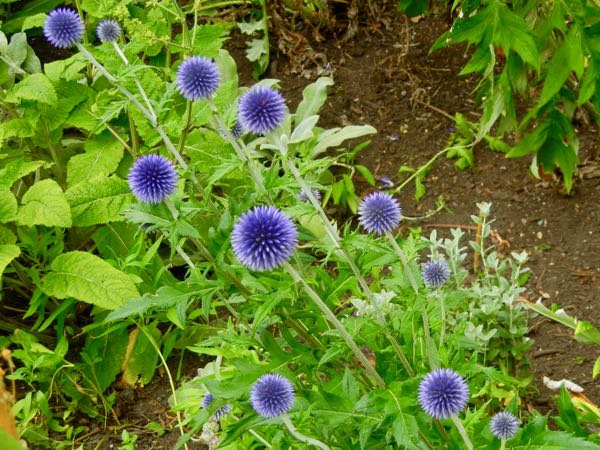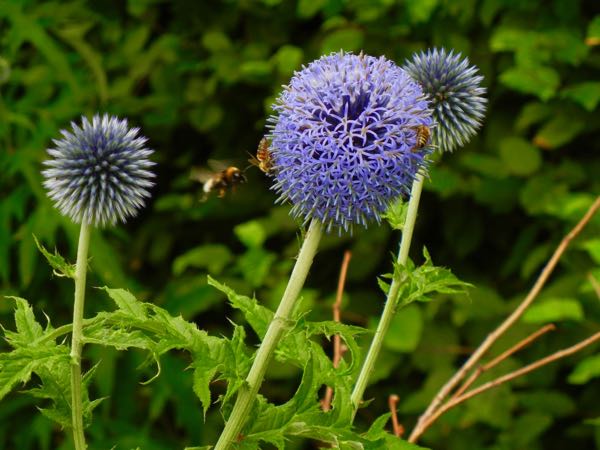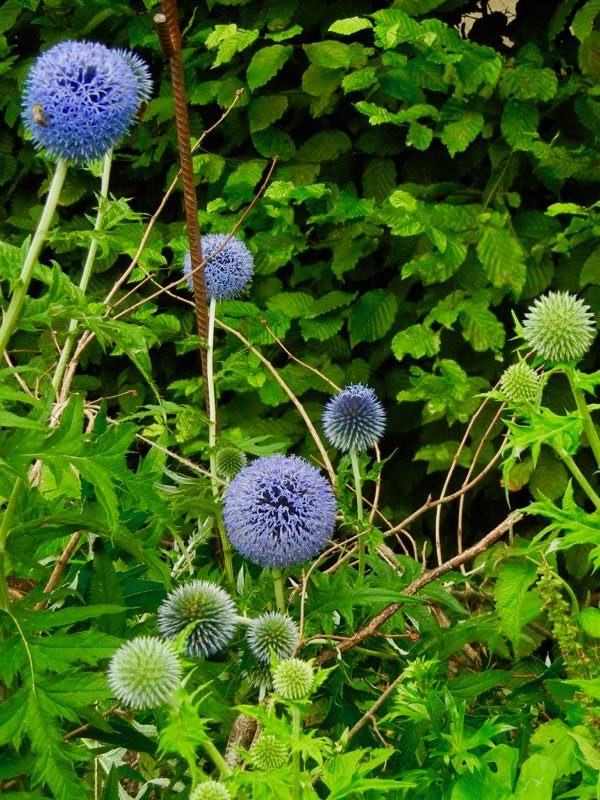Echinops bannaticus, commonly known as Echinops retro, Blue Globe Thistle, or Hungarian Globe Thistle, is a clump-forming perennial that belongs to the Asteraceae family of plants. With its striking blue globes of flowers and unique foliage, this plant adds a touch of intrigue to any garden or landscape. Native to southeast Europe, Echinops bannaticus derives its name from the Banat region, which spans across Romania, Serbia, and Hungary.
Echinops bannaticus features gray, wooly stems that give it a distinctive appearance. The foliage is greyish-green, spiny, and covered in fine hairs. The leaves contribute to the plant’s overall texture and provide an interesting contrast to its flowers. In mid to late summer, Echinops bannaticus produces spherical clusters of bluish-gray or violet flowers, known as globes. These globes can reach a diameter of about 5cm (2 inches), creating a captivating display.

Cultivation of Echinops bannaticus:
Light Requirements: Grow Echinops bannaticus in a location that receives full sun to partial shade. This plant thrives with at least 6 hours of direct sunlight each day, which promotes optimal growth and flowering.
Soil Type: Echinops bannaticus is adaptable to various soil types, but it prefers poor, well-drained soil. It can tolerate dry conditions and is drought-resistant once established. However, it’s important to avoid waterlogged or excessively fertile soil, as this can lead to floppy growth and reduced flower production.
Propagation: You can propagate Echinops bannaticus through seeds or division. Sow the seeds in spring or fall, either directly in the garden or in pots for later transplanting. For division, carefully separate the plant clumps in early spring or late autumn, ensuring that each division has a portion of the root system attached. This method helps rejuvenate the plant and create new specimens.
Maintenance: To prolong the blooming period and prevent self-seeding, it is recommended to deadhead the spent flowers of Echinops bannaticus. Simply remove the faded flower heads before they can develop seeds. Additionally, keep an eye out for aphids, which can occasionally affect the plant. If aphid infestation occurs, gently wash the insects off with a strong stream of water or use organic insecticidal soap as necessary.
Landscape Uses: Echinops bannaticus is a versatile plant that can be used in various garden settings. Its spherical flowers add an architectural element to borders, rock gardens, and wildflower meadows. They also make stunning cut flowers, both fresh and dried, for floral arrangements. Furthermore, Echinops bannaticus attracts pollinators like bees and butterflies, making it a valuable addition to any garden seeking to enhance biodiversity.
By following these cultivation practices, you can enjoy the beauty of Echinops bannaticus and create a captivating display of its unique blue globes in your garden or landscape.





